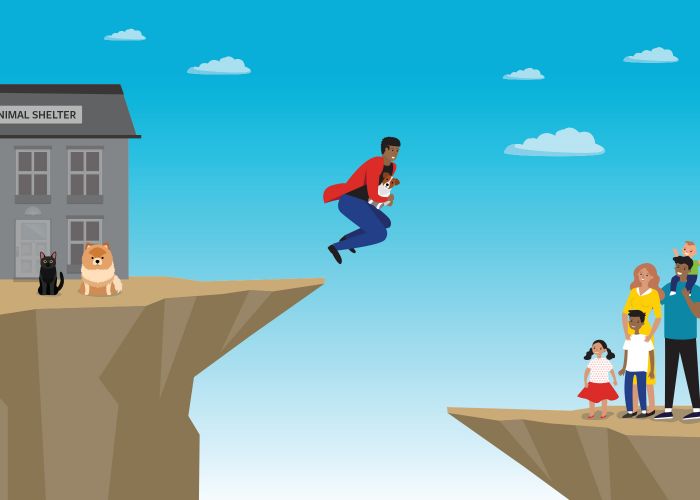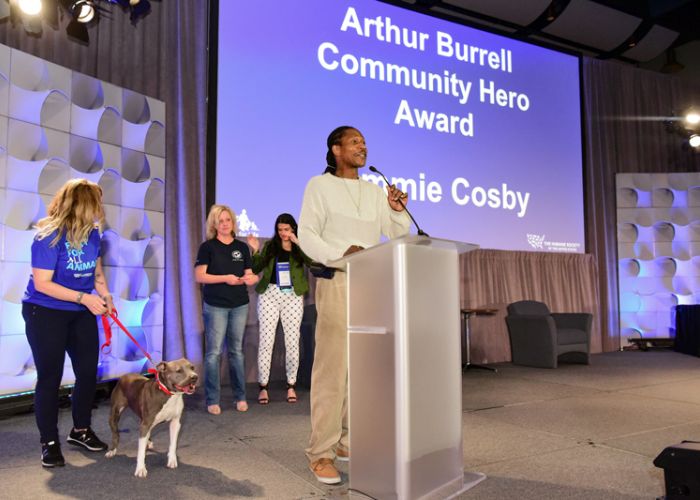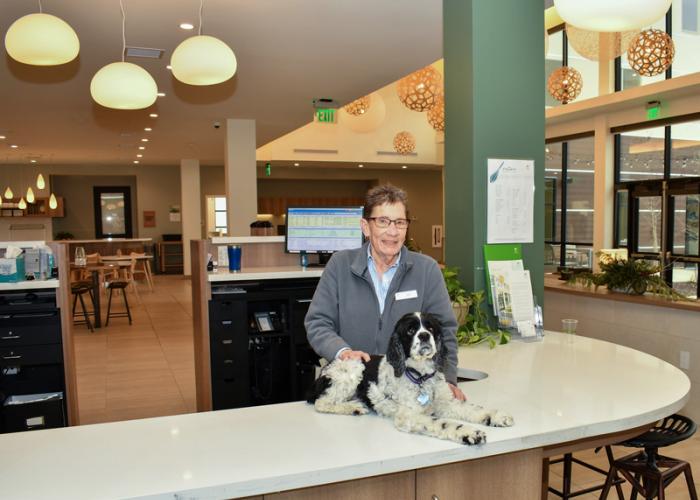Forget the fairy tale
Lowering your drawbridge will help more adopters and animals live happily ever after
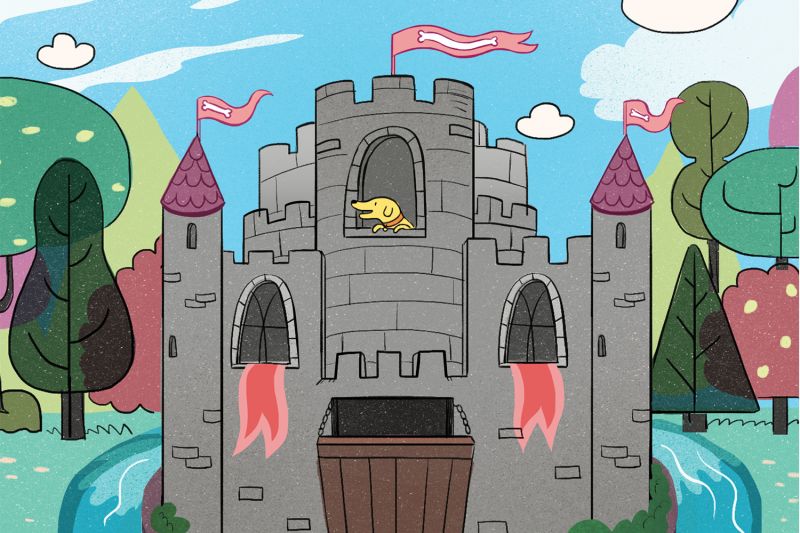
Almost two years ago, I set out to adopt a Chihuahua from a rescue group that prides itself on finding “carefully screened forever homes.”
First, I completed and emailed a short adoption questionnaire, detailing the members of my household and my landlord’s contact information. I waited a week with no response, so I followed up twice. I then had two, hour-long phone conversations with two different adoption coordinators. I had a home visit, during which a volunteer came to my home and asked about my yard. Over several weeks, I was politely told two dogs were “not a good fit” and asked if I knew Chihuahuas could shed, because “it was on your application as preferring a low shedder.”
All in all, it took 27 back-and-forth emails, five weeks, an adoption event and the mandatory purchase of the specific type of leash the group preferred before I took home my 3-year-old Chihuahua mix.
And behold: My hilarious, moody little canine is my heart. His ears are so oversized that people stop us in the street to compare him to Dumbo. He triumphantly steals my socks and sprints from room to room with them flapping from his mouth like a victory banner. He snores, he’s a sloppy yet insistent kisser, and he even sheds a little. And I’m besotted with him.
As a first-time dog owner, I’m perhaps a little overzealous. I spend way too much time internally debating questions like, “Based on his morning walk”—during which I pay close attention to his evacuations—“should I add canned pumpkin to his breakfast?” “Does he prefer cheese-flavored treats to sweet potato treats?” (No.) “Does he need a tiny neck warmer and a custom-made snow coat?” (Obviously.)
My dog didn’t start as a perfect fit for me, nor I for him—we did that work ourselves. I worked for months on his separation anxiety, and don’t get me started on his taste for inedible materials. I’m sure he’d have something to say about me dragging him away from my neighbor’s tree-with-unidentifiable-berries, as well.
There was no such thing as a perfect match, only a good one that became great with effort and time. Yet on the day I finally adopted my dog, I felt wrung out and guilty, like I wasn’t worthy of the little being I held so carefully in my arms.
When I experienced this, it was all new and baffling to me. My HSUS co-workers, though, had heard it all before. Stories like mine are part of what’s inspired the Adopters Welcome campaign here at The HSUS, which aims to help shelters and rescues see adopters more as partners and less as risks to be screened.
The campaign recognizes that—especially in a world where shelters and rescues are still not the primary source for people seeking pets—multipage applications, home checks and other adoption barriers are scaring off (not to mention irritating) potential adopters, who can get the impression they need fenced yards and six-figure incomes to adopt.
The truth is, delaying or denying adoption doesn’t stop people from getting a pet. Research has shown that the majority of cats and dogs aren’t coming from shelters and rescues—they’re taken in as strays, or coming from a breeder (whether legitimate or a puppy mill), a friend’s accidental litter or a pet store. Such pets are often unvaccinated and unaltered and go home with no built-in support network for when they start scratching the couch or developing a nervous barking habit.
Adopters Welcome helps shelters and rescue groups increase placements by removing burdensome adoption policies (i.e., home checks and lengthy applications) in favor of embracing and attracting community members from all walks of life, encouraging them to adopt and supporting them post-adoption. An estimated 144 million pets are living in U.S. homes, compared with the 6-8 million who enter a shelter each year, some of whom are strays or community cats. Less than 6 percent of pets enter the shelter and rescue system. That’s a great reason to take a step back and celebrate the success of the other 94 percent—and base adoption policies around them, not on the outliers.
“In general, traditional restrictive policies were developed out of gut feelings and best guesses based on the knowledge of the times,” says Natalie DiGiacomo, former director of shelter services at The HSUS. “We don’t have to do that anymore. Today, we can draw upon surveys of adopters and non-adopters to learn what drives them to choose a shelter or rescue pet or what prevents them from making that choice. We can examine statistics on where pets are coming from when they aren’t coming from shelters, and examine what makes those others sources so appealing.”
For years, shelters and rescues made it a point to differentiate themselves from pet stores. But in some cases, they’ve made themselves too different, making potential pet owners feel not like valued customers and appreciated supporters, but like potential wrongdoers and miscreants, presumed guilty rather than great.

Adopters Welcome argues that adopting an animal should be a friendly, fun, supportive experience—one that presents pet ownership as a delight, not as a heavy burden reserved for a chosen “perfect” few. Open, supportive conversations send adopters home not just with an animal who’s been vaccinated and neutered, but with a good feeling about whom to call if they do hit a bump in the road.
Welcoming adopters doesn’t mean that you can’t have a conversation about lifestyle and expectations, and it doesn’t mean taking more risks, says DiGiacomo. “It’s about recognizing all of the risks to pets in a community and empowering everyone to get past them together,” she says. “The research is pretty clear that common screening policies don’t make animals any safer. Meanwhile, denying an adoption based on outdated policies or making it hard for good people to adopt does increase other risks, including euthanasia of adoptable animals, long length of stay, diversion of resources from pets most in need and a reputation that frustrates our ability to broaden our connection with the community.”
And welcoming adopters doesn’t mean sending people home with mismatched pets. “One of the misconceptions folks have about our adoptions is thinking that you walk in the door and you walk out with an animal,” says Carmine DiCenso, executive director of the Providence Animal Rescue League (PARL) in Rhode Island. PARL did away with requirements like landlord and veterinarian checks in 2012 and removed applications completely by 2013, but “we’re still trying to find that best person-animal match.”
“We care so much about these animals, we want to hold them close and control what happens to them,” he says, “but in reality, you don’t have control” over what happens after an adopter leaves with an animal. What shelters and rescue groups can control, however, is their interactions with the community and people’s experiences with the organization.
“Shelters are not the first choice; that’s not where most people get their animals,” DiCenso says, so “the fact that they’re in the door is a great thing. Just start from that mindset.” When you have nonjudgmental conversations, “people will tell you more information than they’d write on a piece of paper.”
When PARL instituted its new approach to adoptions, there was some resistance. But DiCenso says that interactions with the public are now “a more pleasant experience for both staff and adopters.” PARL has seen a decrease in adopter complaints and an increase in positive letters, like the one he saved from an elderly woman who had previously been denied adoption at shelter after shelter.
“[She said] ‘elderly people need companion animals too.’ … She thanked us so much for not looking at her age first and actually talking to her,” he says.
Learning about removing barriers to adoption at Animal Care Expo 2013 solidified the importance of open adoptions for Lori Rolnick, cat program director at Homeward Trails Animal Rescue in Arlington, Va. The Homeward Trails cat team moved from across-the-board home visits to case-by-case home visits and from interviews to conversations. They implemented same-day adoption events.
“I realized that in 10 years, I have denied two homes out of thousands [after a home visit],” she says. “And neither situation would have been worse than dying in a shelter.”
In the past, home visits increased adoption turnaround time by days or even weeks, depending on where a potential adopter lived, and resulted in longer lengths of stay for the cat. Rolnick says that letting go of home visits is “one of the best things we’ve ever done in helping to save more cats.”
Same-day adoption events place “a lot of cats,” Rolnick says, during which she relies on an experienced adoption coordinator to determine good person-animal matches. The group still completes veterinarian checks during these events, but “without question” she’s found that adopters are honest.
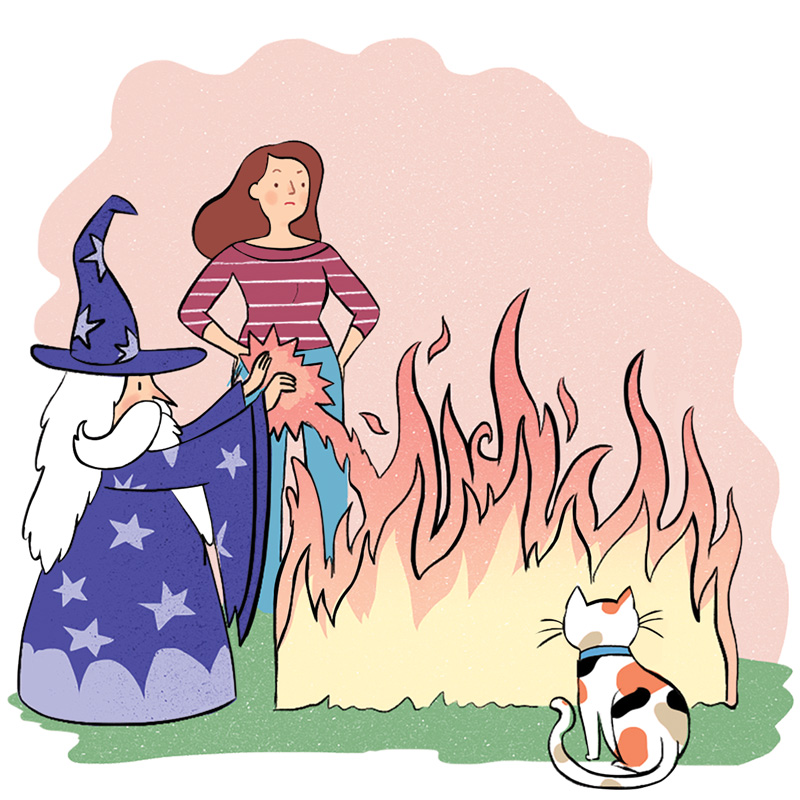
“When people say their animals are up-to-date [on vaccinations], they are, and when people’s animals are not up-to-date they usually tell you,” she says. She’s found that adopters with a spotty vet history have often learned from it and intend to be more diligent the next time around.
Abby Volin, rescue group coordinator at The HSUS, points to this honesty as a great reason to let go of barriers like vet checks. “When we let people know that we want to work with them to connect them with a pet and tell them that we’ll be there to support them and their pet at home, potential adopters won’t feel the need to lie or omit important information,” she says. “So when they tell us about their less-than-perfect vet history, it’s an opportunity for us to share insight and resources from a position of support.”
Rolnick found that adoption coordinators were initially hesitant about dropping home checks and seeing former adopter no-nos as conversation starters, but she was persistent. She shared The HSUS’s Adopters Welcome guide with her staff and talked about how length of stay can negatively impact animal health and the organization’s capacity to help more animals. She had her team watch her chat with adopters, modeling “What can we do to help you leave with a cat today?” instead of “How can you meet our standards?” She encouraged adoption coordinators who thought a particular animal wasn’t the right choice to work with adopters to find a different match or refer adopters to another group, rather than deny adoption entirely.
“They see the incredible need,” says Rolnick. “So it wasn’t that difficult.”
South Suburban Humane Society (SSHS)—a group that initially operated as a foster network, but now operates a shelter and low-cost spay/neuter clinic in Chicago Heights, Ill.—implemented the Adopters Welcome approach after Animal Care Expo 2015.
“We read the booklet back and forth, and we were like, ‘We love this!’” says office manager Katie Harms. “We went through all of that research … because we need our volunteers, we need our donors, and we want them to be aware of any decision we’re making, and we want them to be comfortable with it too. So before we made the change, we had an open meeting with all our volunteers to get their input, as well. Everyone was really excited—we were shocked.”
Prior to implementing the approach, SSHS had required that the entire family meet a pet they planned to adopt. They required dog introductions, landlord checks and home checks—all of which have been nixed. The group’s application is now a questionnaire that encourages adopters to ask pet care questions.
Harms attributes the group’s change of heart to research, research, research, citing an ASPCA study that showed dogs who were “food aggressive” in a shelter environment—one of the most common reasons a dog might be deemed unadoptable to families with another dog, or even unadoptable, period—behaved very differently once in an adoptive home.
It’s made her reflect. “Oh my God, how many adoptions did I decline in the past that I should’ve not?” she says.
The organization doesn’t rule out checks in all cases, but prefers to perform them sparingly, at staff discretion, for animals who need special care. And they’re happy to help with introducing the adoptee to other family members and resident pets, if requested. “There’s always going to be those particular animals,” says Harms, “but what’s the point of having everyone come in and meet a cat if this is their 10th cat as a family?”
Despite finalizing 20 to 45 adoptions a week—often same-day—returns haven’t increased. But SSHS also added a 30-day “no fault” return policy for good measure. “If things aren’t working out, bring the animal back—we want to find the best match,” says Harms. “I think that really helps [adopters] be able to make a decision … if they’re taking on a dog that has some issues, they feel more comfortable doing it because if for some reason it wasn’t a good match, they could return.”
“We want to get people away from buying from breeders or pet stores—that’s obviously our number one goal,” she says. “Word-of-mouth travels a long way. We’re getting [adopters from] so many different areas coming in that we’ve never had before.”

In Minnesota, the Animal Humane Society (AHS), which has five adoption centers, has been successfully implementing open adoption policies for over 20 years.
With rigid adoption requirements, “all we’re telling people is that we don’t trust them and they’re not good enough,” says president and CEO Janelle Dixon. “If people want an animal, they’re going to get one, so whether they get it from us or not, it impacts our ability to … engage them in the organization in other ways that support them and their animals throughout that animal’s life.”
Despite its seasoned status, when AHS chose to implement “the next generation of open adoption” in August 2014, Dixon says the entire organization first spent a year researching the “customer-centric” adoption process. They analyzed visitors’ full sensory experience, asking themselves what visitors see, hear, smell and touch when they walk into an adoption center, and if it was an intuitive, positive experience.
With help from the University of Minnesota, AHS staff asked community members to complete surveys when they visited an adoption center. The organization conducted focus groups and “walk throughs” with community members, fellow staff and volunteers, identifying barriers to adoption and areas that were problematic.
The project led to a “vision mapping process,” in which AHS staff and volunteers imagined a more customer-centric space, and then a trial rollout of their vision at a single adoption center, which included the removal of literal barriers. “We went from these big old adoption counters where people stood and waited and talked with us for 25 minutes,” Dixon says. “Everything is now seating areas where [adopters] come in and there are [staff] working in teams to help people visit animals, be able to be hands-on with them, ask questions, share what they’re looking for and get guidance in a more casual and relational way.”
After the trial rollout, staff and volunteers were able to share lessons learned before implementing changes at the four other adoption centers over the next nine months. AHS altered the physical infrastructure of its adoption centers to make them easier to navigate, and gave staff and volunteers headsets and tablets so they could move around during interactions with adopters.
Almost every door was replaced with a glass door, and some cat colony housing was replaced with glass housing, creating “bright, friendly” spaces and showing off the animals. Little footprints and strategic lighting show visitors where they can walk; cage cards feature color photos, a distinct lack of insider jargon and a story about each animal’s origins.
“All of that ties into that customer experience,” Dixon says, adding that simple but heartwarming touches, like announcements over a loudspeaker whenever an animal goes home with an adopter, keep staff informed and visitors engaged.
“It was a huge change for our volunteers,” she says, noting that a lot of volunteers come to the shelter to work with the animals, not with people. “It’s [now] an expectation that the customer is an equal, primary focus.” Staff embraced the approach, especially once they saw a boost in overall placements.
Their welcoming approach means animals don’t stick around long: Length of stay for dogs is down from roughly five days to three days, and for cats, down from roughly a week or more to three to five days.
“Once an animal goes up to the adoption center, they kind of fly out the door,” Dixon says. “We limit that animal’s opportunity for another chance, and we limit other animals’ opportunities [if] we’re just continuing to hold on to that animal for no good reason.”


